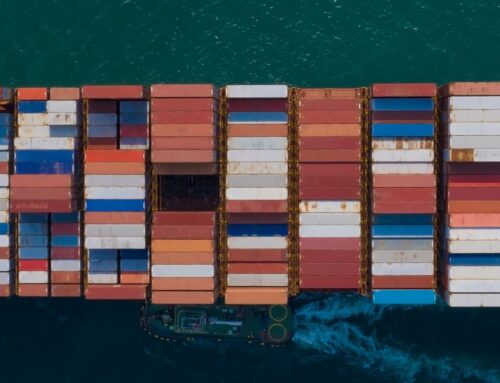The Global Biodiversity Framework (KMGBF) is comparable to the 2015 Paris Agreement on climate change.
COP UN biodiversity conference: time to put commitments into practice
The 16th Conference of the Parties on Biodiversity ended on November 2, 2024 in Cali, Colombia. The ambition of this international meeting? To be the “COP of implementation” in the face of the urgent need to halt the collapse of living organisms. Antonio Guterres, Secretary General of the United Nations, recalled that the erosion of biodiversity constitutes an “existential crisis”.
Thus, the COP 16 UN biodiversity conference was the time to put into practice the commitments made in Montreal at COP15 in 2022. The 15th Conference of the Parties was a key event for the planet, as Positivéco reminded. Indeed, the Montreal summit distinguished itself by the adoption of unprecedented commitments to combat the erosion of biological diversity. With its 23 targets for 2030, the Kunming-Montreal Global Biodiversity Framework (KMGBF) is a historic agreement. The KMGBF commits the 196 signatory countries to protecting 30% of terrestrial areas and 30% of marine areas, while restoring 30% of natural areas. Developed countries have also pledged to help developing countries finance the preservation of biodiversity. They will have to mobilize $20 billion a year by 2025 and $30 billion a year by 2030. This ambitious global framework is comparable to the 2015 Paris Agreement on climate change.

COP16 endorsed the creation of the “Cali Fund”, aimed at sharing the benefits of sequencing genetic resources.
The parties also agreed a new process for identifying ecologically or biologically significant marine areas (EBSAs).
What progress has been made on the global biodiversity framework at the COP 16 UN biodiversity conference?
Did the COP16 UN biodiversity conference confirm the significant momentum in implementing the Kunming-Montreal agreement?
3 major advances in international cooperation
Firstly, the COP 16 UN biodiversity conference ratified the creation of the “Cali Fund”. This multilateral fund aims to share the benefits derived from the sequencing of genetic resources. The Cali Fund will enable companies using biodiversity to compensate the countries of origin of these resources. Half of the funds collected must be allocated to indigenous and local communities. However, there is one limitation: the companies concerned are encouraged, not obliged, to contribute to the fund.
The member states also ratified an unprecedented multilateral agreement. This text recognizes indigenous peoples and local communities as key protagonists in biodiversity conservation. A subsidiary body will be dedicated to them, to guarantee their participation in biodiversity decision-making.
The COP16 UN biodiversity conference has two other working groups, one dedicated to scientific research (SBSTTA) and the other to implementation (SBI). At the Cali summit, Gabonese francophone delegate Jean Bruno Missika was elected chairman of the SBSTTA. On this occasion, France and Gabon strengthened their partnership for biodiversity announced at the One Forest Summit. The two countries launched the Partnership for Forest Ecosystems, Nature and Climate, or Country Package. Accompanied by partners such as the NGO The Nature Conservancy, France has pledged to support Gabon’s biodiversity protection commitments by mobilizing $60 million.
Progress in protecting marine areas important for biodiversity
The COP 16 UN biodiversity conference also saw the adoption of several other key decisions. In particular, the parties agreed on a new process for identifying ecologically or biologically significant marine areas (EBSAs). These criteria are essential to achieving the goal of protecting 30% of ocean areas by 2030. Indeed, it will be crucial to facilitate the identification of marine areas to be protected, especially in international waters.
Other points to watch
The States also agreed on the following points:
- Drawing up an action plan for biodiversity and health, to curb the emergence of zoonotic diseases
- New guidelines for managing invasive species
- Creation of a new expert group on synthetic biology
- Call to coordinate climate action with biodiversity protection.
Only 43 countries, including France and the EU, have submitted a national strategy dedicated to meeting KMGBF commitments.
No concrete decisions have been taken on the framework for monitoring states’ progress towards KMGBF objectives.
The presentation of national biodiversity strategies, the cornerstone of the Global Framework’s operationalization
The COP 16 UN biodiversity conference was supposed to be an opportunity for countries to present a comprehensive action plan in line with the Kunming-Montreal Agreement. However, only 43 countries, including France and the EU, submitted a national strategy dedicated to meeting their KMGBF commitments. As a result, only a small group of countries have identified concrete mechanisms for achieving the 23 KMGBF objectives. On the other hand, 119 countries have submitted partial biodiversity-related commitments. These countries have yet to formalize a national strategy aligned with the Montreal objectives. This is an alarming state of affairs, given that the signatories have only 6 years left to meet their commitments.
Similarly, the COP 16 UN biodiversity conference made little progress on the monitoring framework for the Global Biodiversity Framework. However, signatories will have to provide a first report on the relevance of their national strategy at COP17 in 2026. In Cali, discussions took place on the monitoring and review procedures planned for 2026 and 2030. However, these exchanges did not lead to a concrete decision. The reason for this stalemate? The parties were unable to agree on how to bridge the funding gap for biodiversity.
The biodiversity financing gap: a sensitive issue at COP16
The special feature of the KMGBF is that it is an action plan backed up by a financing plan.
Clearly identified financing needs
The COP16 UN biodiversity conference highlighted the delicate issue of financing the global framework for biodiversity. By 2022, the Kunming-Montreal agreement estimated the funding gap for biodiversity at $700 billion a year. As a result, the KMGBF plans to mobilize $200 billion a year from all sources.
For the time being, existing financing solutions seem insufficient. The Kunming Global Framework Fund (GBFF) aims to support biodiversity conservation efforts in developing countries. Launched in 2022, the GBFF currently stands at just over $400 million. This amount includes the 163 million pledged at the COP16 Un biodiversity agreement by eight countries, including France. So, to reach the $200 billion target, agreement on a multilateral financing mechanism is essential. However, discussions at COP16 did not enable the parties to agree on a common strategy.
Resources are available but not accessible.
In Cali, the Colombian presidency presented a roadmap including the creation of a new fund for nature. To speed up joint efforts, several developing countries are campaigning for the creation of a global fund dedicated to biodiversity. They feel that existing funds are difficult to access and inequitable. These countries would like to see the creation of a new fund representing all countries, placed under the UN authority of the CBD. Conversely, the EU, Canada, Switzerland and Norway are opposed to the creation of yet another time-consuming and counter-productive fund. So, as with the GBF follow-up mechanism, discussions on its financing have not been successful. The conference was suspended after delegates lost their quorum on the morning of November 2.
On the other hand, since 2022, the Kunming-Montreal agreement has required signatory states to identify subsidies harmful to biological diversity by 2025. This work would then enable these subsidies to be reduced by 500 billion dollars a year by 2030. Very little progress has been made on Target no. 18 in recent years, as the amount of subsidies continues to rise. Moreover, analysis of the strategies submitted by the parties reveals that this target is the least taken into account at national level. At COP16, participants in the dedicated conference stressed the urgent need to establish a viable framework for achieving Target 18.
Conclusion
The COP16 UN biodiversity conference ended in Cali without a decision on two of the key issues at stake in the negotiations. Neither the discussions on mobilizing financial resources nor those on the KMGBF follow-up framework reached agreement. These two mechanisms, which were supposed to ensure compliance with the commitments made in Montreal to save nature, were postponed to a future session.
About Positivéco
At Positivéco, we see the new national and international regulations on CSR as an opportunity for positive growth.
Our aim: to apply financial and commercial skills to structure projects outside the traditional silos.
Since 2009, we have been supporting climate investment and development aid projects; we evaluate CSR policies and carry out extra-financial reporting for our clients. Positivéco advises financial institutions, public actors, listed and non-listed companies.
Request a callback today and discover how you can meet the new CSR requirements while serving the company’s project.

Who we are
With Positivéco, your success is our priority. Since our conception, we have always applied financial and commercial expertise outside the traditional silos, to structure successful and impactful client projects. This improves the visibility of your activities for enhanced profitability and increases your financial valuation.








Contact us now!